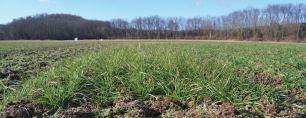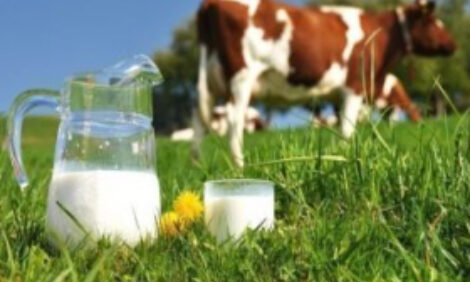



Winter Crops in Dairy Systems Cut Leaching, Weeds and Improve Soils
Winter crops to be harvested are hugely beneficial to soil structure, offering protection to soils through winter, anything else is a "misconception".This is the message to Virginia dairy producers this month from a management expert at Virginia Cooperative Extension; cover crops protect soil, fix nitrogen and are beneficial to soil health.
Dr Gonzalo Ferreira, Management expert at the dairy science extension writes that cover crops are crops planted to increase the health and fertility of soils where they are planted and to benefit the surrounding environment.
*
"The use of winter cover crops in dairy farming systems is typically
oriented to winter annual grasses.
The reason for this is not clear." Dr Ferreira
Writing in a recent extension newsletter, Dr Ferreira explained the "environment-friendly system" emerged as an alternative to the bare fallow cropping system which leaves land susceptible to reductions in soil organic matter accumulation leading to soil degradation.
Benefits of Cover Crops: Limiting Winter Damage
He writes that the benefits of cover crops are multiple and diverse. By covering the soil surface, cover crops reduce soil erosion caused by rain, water runoff, and wind.
The mulch-like cover also limits the access of light, thereby inhibiting or retarding growth of weeds. The root system of cover crops increases pore formation, which increases water infiltration and soil aeration.
Reduced soil compaction is another benefit of pore formation. Additionally, cover crops are a means to reduce environmental pollution. For instance, winter annual grasses can capture residual nitrogen left after harvesting preceding crops in the fall.
Benefits of Cover Crops: Nitrogen Fixing
Alternatively, winter annual legumes can capture nitrogen from the atmosphere and increase nitrogen supply in the soil. In dairy farming systems, winter annual crops are harvested as a forage source for feeding cattle.

Addressing a Misconception
When planted, winter crops serve as a complementary forage source to summer annuals (e.g., corn and sorghum for silage). Because cover crops are typically incorporated into the soil or left as mulch in the soil surface, one potential misconception within the dairy industry is that cover crops are not beneficial to soil health in dairy farming systems.
In response to this misconception, dairy farmers should know that cover crops destined for harvesting still control weed growth, soil erosion, and nutrient leakage.
Cover crops also benefit soil health through below ground biomass development (i.e., root growth).
Scavengers
Last—but not least—cover crops can serve as nutrient scavengers, complementing nutrient (i.e., manure) management plans in dairy farming systems.
The use of winter cover crops in dairy farming systems is typically oriented to winter annual grasses. The reason for this is not clear. Though, one likely explanation is the lack of information about the yield potential and the nutritional quality of different cover crops destined for forages.


